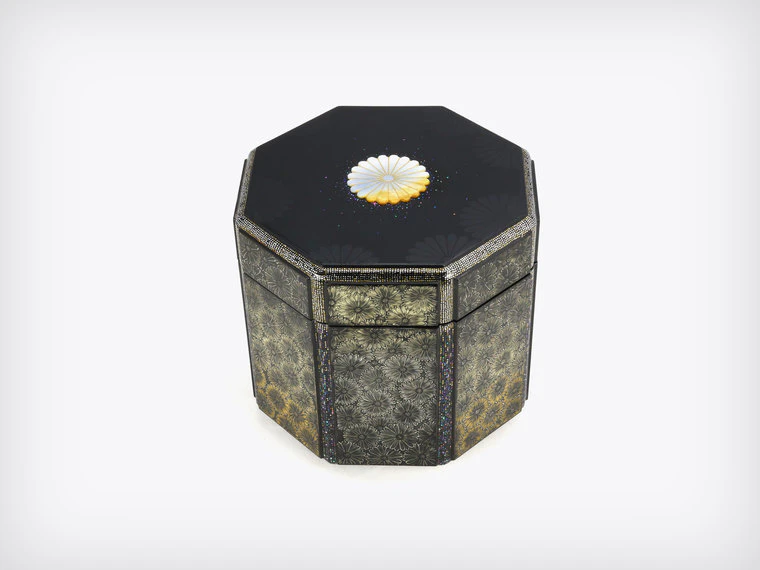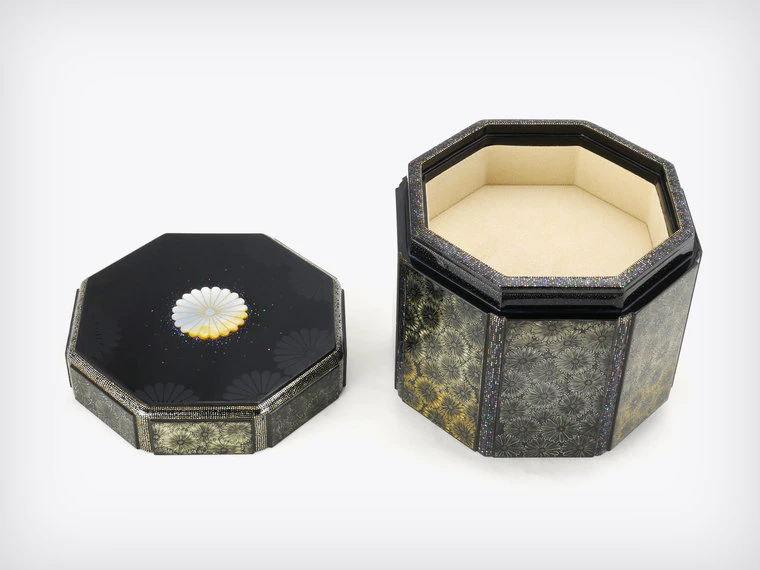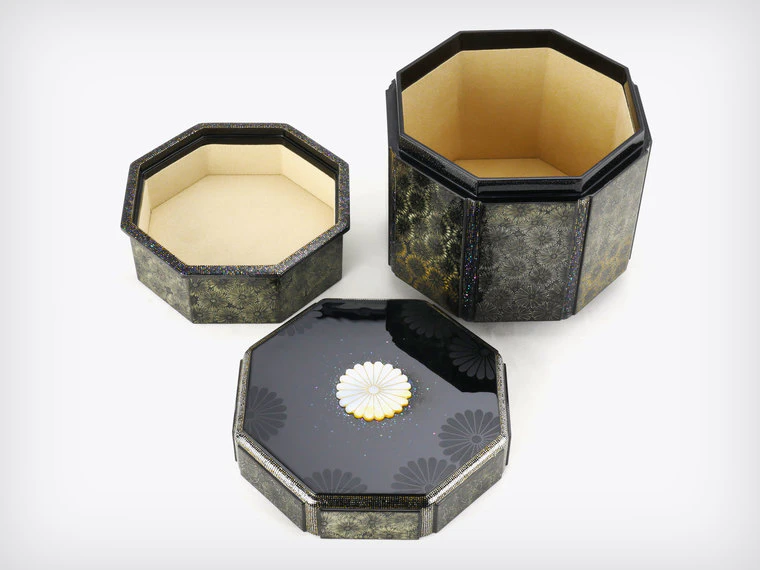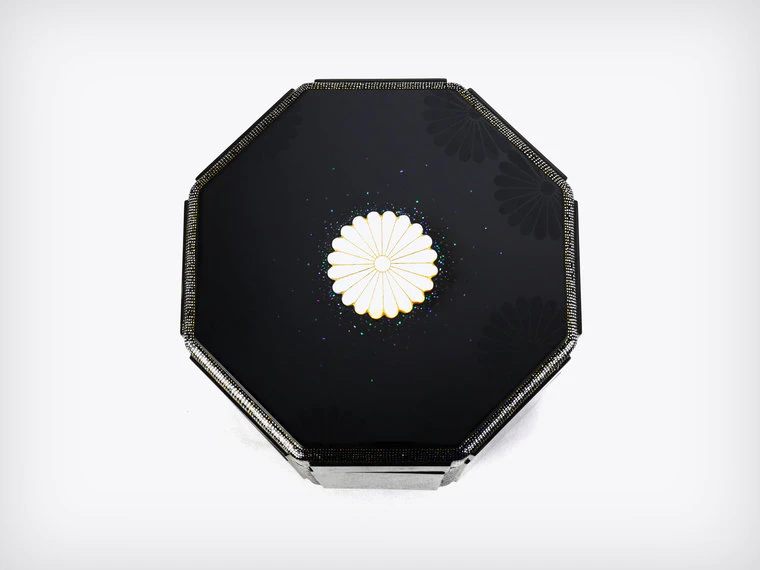Octagonal Box for Chrysanthemum Festival with Chrysanthemum Design in Chinkin
H 12.5 x W 13.5 x D 13.5 cm,Year.2024Kota Mizushiri
1980 -- Lacquerware
- Public Collections : Imperial Household Agency etc.
- Price Range Please Inquire
Description
-
CategoryLacquerware
-
DimensionsH 12.5 x W 13.5 x D 13.5 cm
-
Year presented2024
-
Paulownia BoxIncluded
-
Artist SignatureSigned (paulownia box)
Techniques Used
Maki-e
Maki-e (literally “sprinkled pictures”) is a representative lacquerware technique that originated in Japan around 1,200 years ago. Maki-e is done by painting lacquer motifs on the surface of a piece using a fine brush and then sprinkling gold powder onto the lacquer before it hardens, producing luxurious decorations.
Mother-of-pearl inlay (Raden)
Mother-of-pearl inlay (Raden) is a decorative technique that uses the iridescent inner layer of abalone shell, turban shell, pearl oyster shell, or other mollusk shells. The technique came to Japan from China 1,300 years ago, and pieces featuring mother-of-pearl inlay are included among the artifacts at the Shōsōin Repository in Nara.
Chinkin
For chinkin (“sunken gold”), a chisel or knife is used to incise lines and dots into a lacquered surface. Gold leaf or fine gold powder is then inlaid into the grooves, creating a fine and delicate design.
Lacquering
Lacquering (kyūshitsu) is the art of applying lacquer to a substrate using spatulas or brushes. The technique includes a range of processes, from reinforcing the substrate with cloth to building up the foundation and applying the middle- and top-coats. The final coat can be left as is (nuritate), polished with charcoal to a high-gloss finish (roiro shiage), or given one of several hundred alternative (kawarinuri) finishes. Lacquer application is known for both its technical difficulty and richly expressive qualities.
Please feel free to contact us to commission work, check artworks available for purchase etc.




